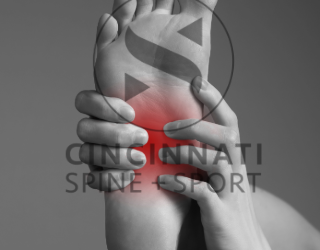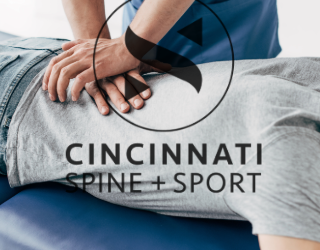The shoulder is a complex and mobile joint that allows for a wide range of motion necessary for everyday activities and athletic performance. However, this complexity also makes it susceptible to various injuries and conditions that can cause pain and limit function. At Cincinnati Spine and Sport, we believe that understanding the anatomy of the shoulder and the common causes of shoulder pain is crucial for effective treatment and prevention.
Anatomy of the Shoulder
The shoulder joint, or glenohumeral joint, is a ball-and-socket joint formed by the humerus (upper arm bone) and the glenoid cavity of the scapula (shoulder blade). Key components include:
- Bones: Humerus, scapula, and clavicle.
- Muscles and Tendons: Rotator cuff (supraspinatus, infraspinatus, teres minor, subscapularis) and deltoid.
- Ligaments: Glenohumeral ligaments and acromioclavicular ligament.
- Bursae: Subacromial bursa.
Common Causes of Shoulder Pain
Understanding the common causes of shoulder pain can help you recognize symptoms early and seek appropriate treatment. Here are some of the most frequent issues we see at Cincinnati Spine and Sport:
- Rotator Cuff Injuries: Tendonitis and tears caused by overuse or acute injury.
- Impingement Syndrome: Compression of the rotator cuff tendons between the humerus and the acromion.
- Frozen Shoulder (Adhesive Capsulitis): Stiffness and pain in the shoulder joint.
- Shoulder Instability: Dislocation, subluxation, or lax ligaments leading to recurrent pain.
- Arthritis: Osteoarthritis or rheumatoid arthritis affecting the shoulder joint.
- Bursitis: Inflammation of the bursae, particularly the subacromial bursa.
Recognizing Symptoms and Seeking Treatment
Common symptoms of shoulder pain include:
- Pain during movement or at rest
- Reduced range of motion
- Weakness in the shoulder or arm
- Swelling or tenderness around the joint
- Clicking or popping sensation
If you experience any of these symptoms, seek a professional evaluation to determine the underlying cause and develop an appropriate treatment plan. At Cincinnati Spine and Sport, our multidisciplinary approach combines chiropractic care, physical therapy, and advanced techniques like Active Release Technique (ART) and dry needling to address shoulder pain effectively.
Prevention and Maintenance
To maintain healthy shoulders and prevent injuries:
- Strengthen Shoulder Muscles: Perform exercises targeting the rotator cuff and deltoid muscles.
- Improve Flexibility: Incorporate stretching routines to enhance shoulder flexibility.
- Practice Good Posture: Maintain proper posture to reduce strain on the shoulder joints.
- Avoid Overuse: Take breaks and avoid repetitive shoulder movements.
- Seek Early Treatment: Don’t ignore shoulder pain; early intervention can prevent minor issues from becoming major problems.
Understanding your shoulder anatomy and the common causes of pain is the first step toward maintaining shoulder health. If you’re experiencing shoulder pain or discomfort, schedule an appointment with Cincinnati Spine and Sport today to start your journey toward recovery and optimal performance.
By educating our patients about shoulder anatomy and the common causes of pain, we aim to empower you with the knowledge needed to take proactive steps in maintaining shoulder health and preventing injuries. Our team is here to support you every step of the way.





